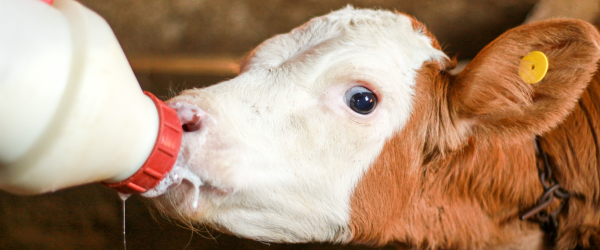In order for calves to get off to the right start they need to be fed at least 4L of good quality colostrum within the first few hours of life. This has been well known for decades, yet some producers still make their colostrum quality decisions based on myths instead of facts.
In a recent William H. Miner Agricultural Research Institute – Farm Report, Sarah Morrison, a research scientist, sets out to help debunk common misconceptions and prevent dairy producers from dumping perfectly good colostrum down the drain. Don’t let these three myths deprive your calves of high-quality nutrition!
Myth #1: The more colostrum produced, the greater the quality.
Although a cow may produce a high quantity of colostrum, that does not always mean that the colostrum is the adequate quality. According to Morrison, the only way to determine quality is by testing the colostrum. Using a hand-held refractometer is an inexpensive, reliable on-farm method to check if your colostrum program is working well.
Myth #2: First lactation animals produce poorer colostrum.
While the first milking of a first lactation animal can sometimes be challenging, don’t dump her colostrum down the drain.
“Parity status of the dam isn’t a good indication of quality colostrum,” Morrison says.
When milking any fresh animal, take the time to get her into the parlor in a calm fashion to help ease her stress and encourage milk letdown. Wipe the teats from any debris and sanitize with a pre-dip solution to help prevent bacteria from entering the colostrum.
Myth #3: Calves who drink from a bottle have greater immunoglobulin absorption.
One of the greatest feelings on the farm is having a calf take to the bottle just a few hours after birth. In contrast, one of the most frustrating feelings is trying to feed a newborn calf that just won’t nurse.
According to Morrison, some producers believe that triggering suckling helps to activate the esophageal groove. While nobody wants to tube a calf unless they absolutely have to, Morrison notes that you should not be fearful of inferior immunoglobulin absorption when tubbing.
“The critical aspect is that colostrum needs to get into the calf within the first hour or two after birth for it to be effective and the calf to get passive transfer,” Morrison says.
Original article sourced from https://www.dairyherd.com/



